Most seasoned SaaS marketers recognize the importance of a powerful value proposition. It's your North Star, informing your content, sales approach, and overall go-to-market strategy. Yet, all too often, we see a tendency to rush the value prop definition, leading to vague statements like “We help businesses grow faster” or “Our software transforms your workflow.”
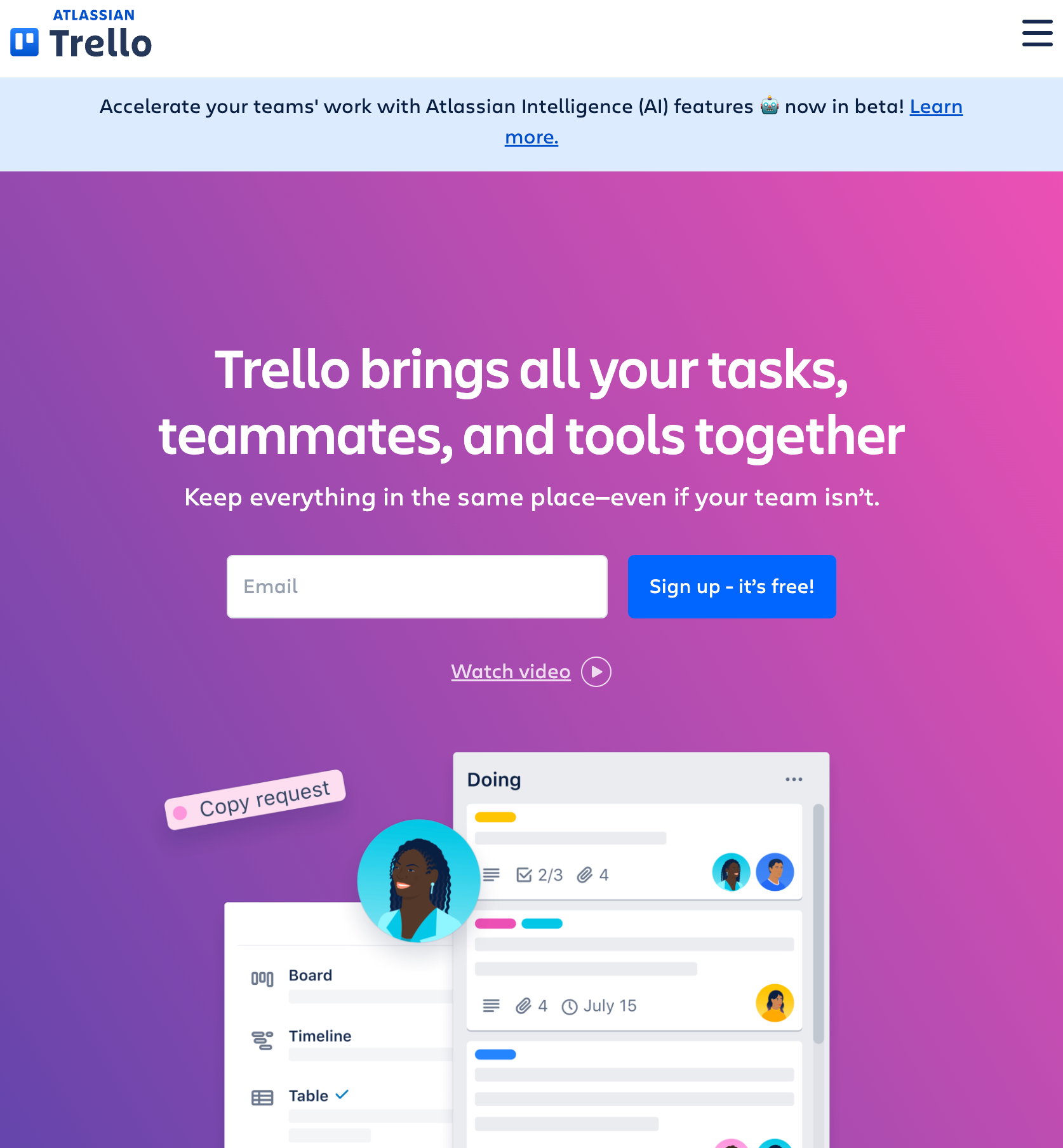
The problem with such statements is two-fold:
They're forgettable.
Customers hear similar promises all the time. Your message lacks a distinct hook.
They miss the mark on specificity.
It's crucial to understand how you help businesses grow or transform workflows.
The key to a compelling and resonant value proposition lies in the often-overlooked step of establishing and articulating your product hierarchy.
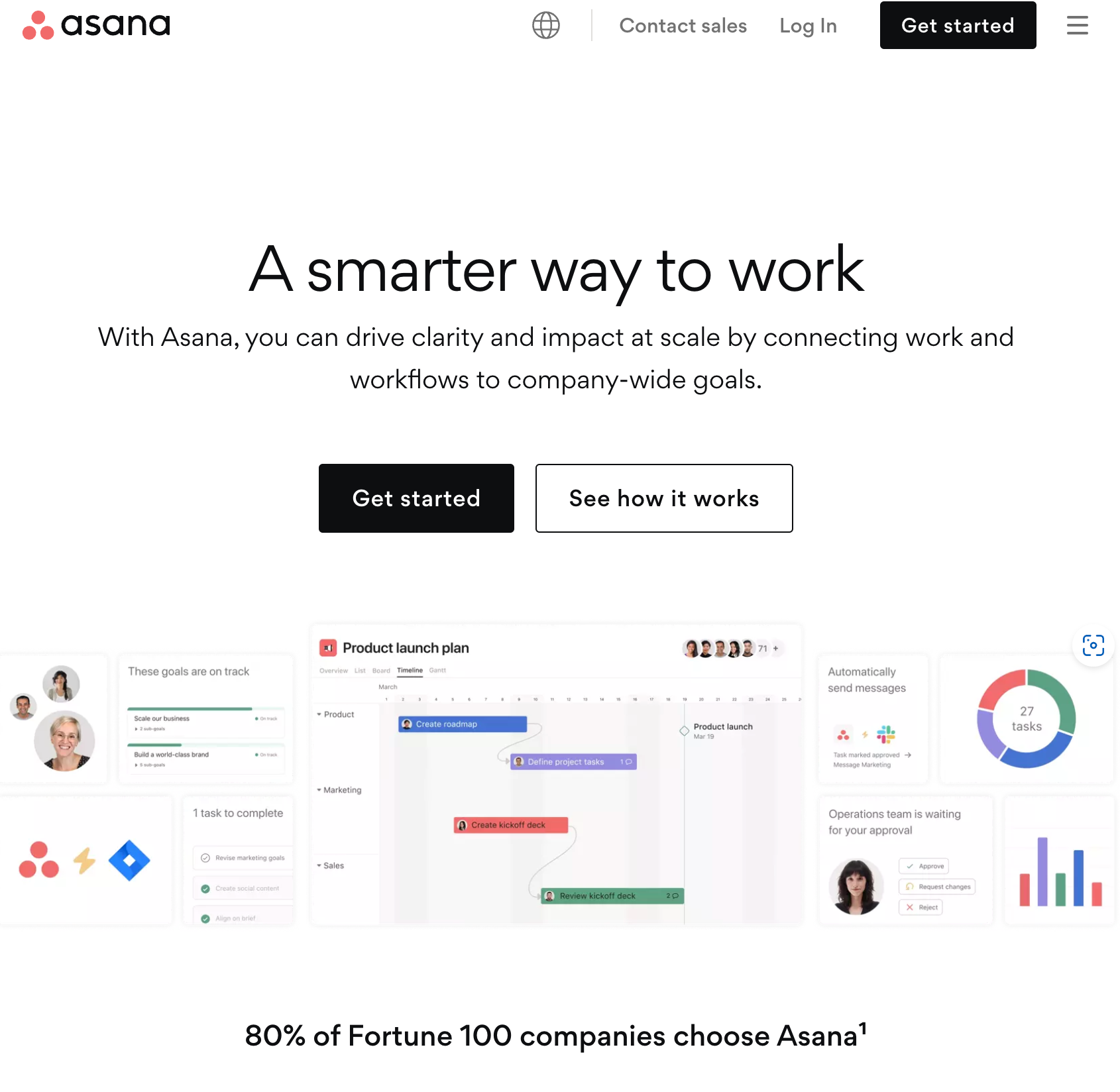
Your Hierarchy as North Star
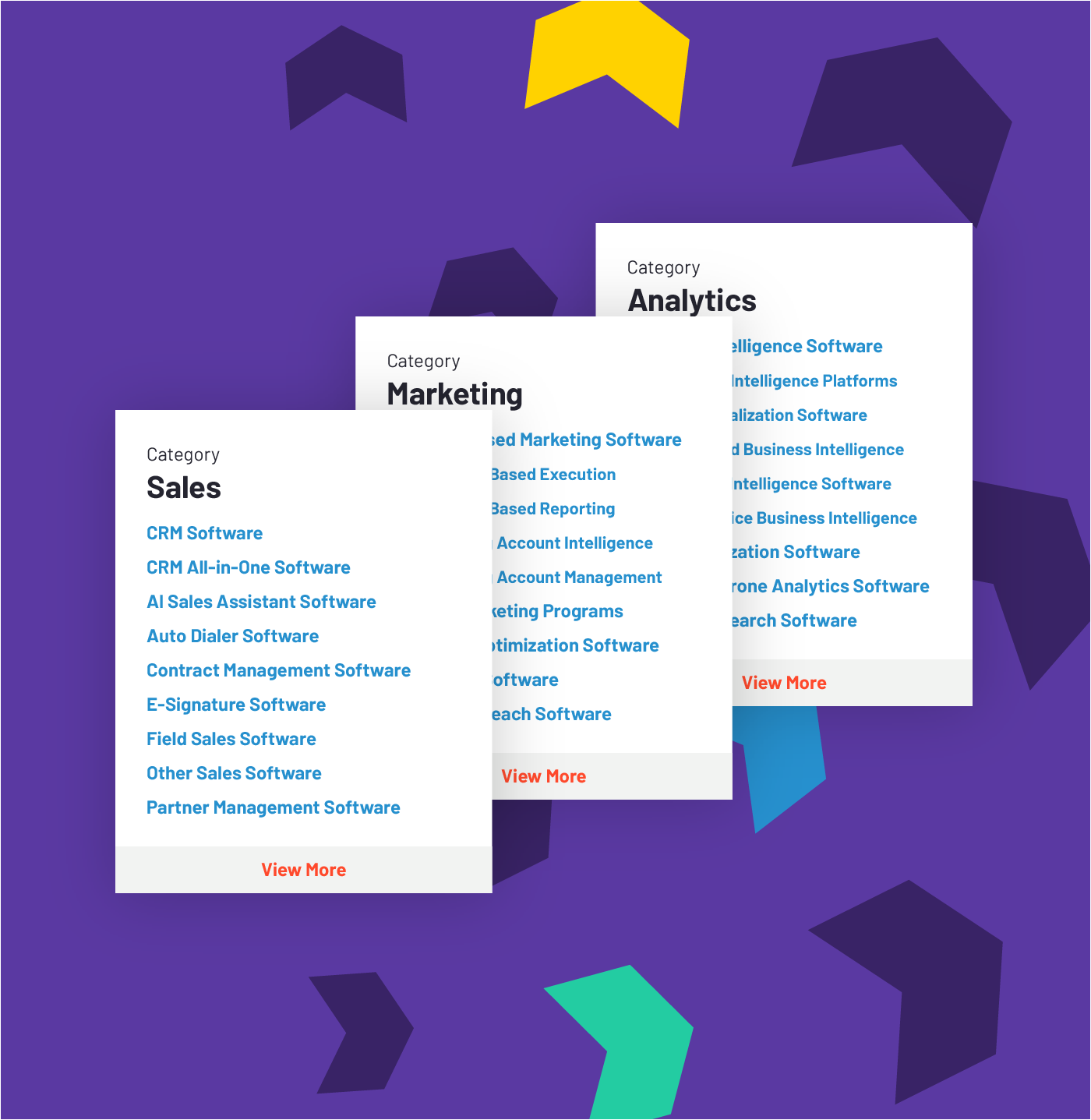
Let's dissect the term “product hierarchy.” It's a structured way of organizing your offerings, starting from the broadest product categories down to individual features. Here's a simplified example for a fictional email marketing SaaS:
Level 1: Product Category - Email Marketing Software
Level 2: Core Solutions - Email Campaigns, Automation Workflows, Contact Management
Level 3: Features - Drag-and-drop Email Builder, Segmentation Tools, A/B Testing Capabilities
Establishing a clear hierarchy brings multiple benefits, but from a value proposition angle, it provides the bedrock for:
- Focus: Helps you zoom in on the specific pain points and needs you address at each level.
- Differentiation: Guides you to pinpoint what makes your solutions genuinely unique compared to competitors.
- Messaging: Ensures consistency and clarity in how you communicate your value to different customer segments.

The McDonald's Analogy (with a Twist)
To bring this to life, think of a visit to McDonald's. You instantly understand its product hierarchy:
- Category: Fast Food
- Solutions: Burgers, Fries, Desserts, Breakfast
- Features: Big Mac, McFlurry, Egg McMuffin
While this hierarchy is simple, there's strategic nuance behind it. McDonald's value proposition isn't just about serving tasty meals. Instead, it centers around:
- Speed: Fast service, accessible locations
- Affordability: Value meals, dollar menu
- Consistency: You know what to expect, regardless of which branch you visit
Now, think about SaaS. While you're not serving burgers, let's apply that same analysis:
| McDonald's | Your SaaS |
|---|---|
| Fast Food | [Your Product Category] |
| Burgers, Fries, Breakfast | [Your Core Solutions] |
| Speed, Affordability, Consistency | [Your Overarching Value Props] |
Practical Exercise for Hierarchy Clarity
So, how do you build this clarity for your agency's offerings? Here's a two-part exercise:
1. Top-Down Mapping:
Start broad and descend into detail. Be specific, avoiding ambiguous terms.
Example: A Content Optimization SaaS
- Category: Content Optimization Platform
- Solutions: AI-Powered Writing Assistant, SEO Analysis & Recommendations, Competitor Content Insights, Readability Scoring
- Features: Grammar Suggestions, Keyword Density Tools, Content Performance Tracking
2. Bottom-Up Validation:
Now, take your lowest hierarchy level (features) and ask these questions for each:
- Target customer pain point: What specific problem does this feature solve? (e.g., “Writers struggle to produce SEO-friendly content.”)
- Ideal use case: In what scenario is this feature most valuable? (e.g., “Bloggers aiming to improve organic search rankings.”)
- Differentiator: How does your feature do this better or differently than competitors? (e.g., “Provides real-world content examples from top-ranking competitors.”)
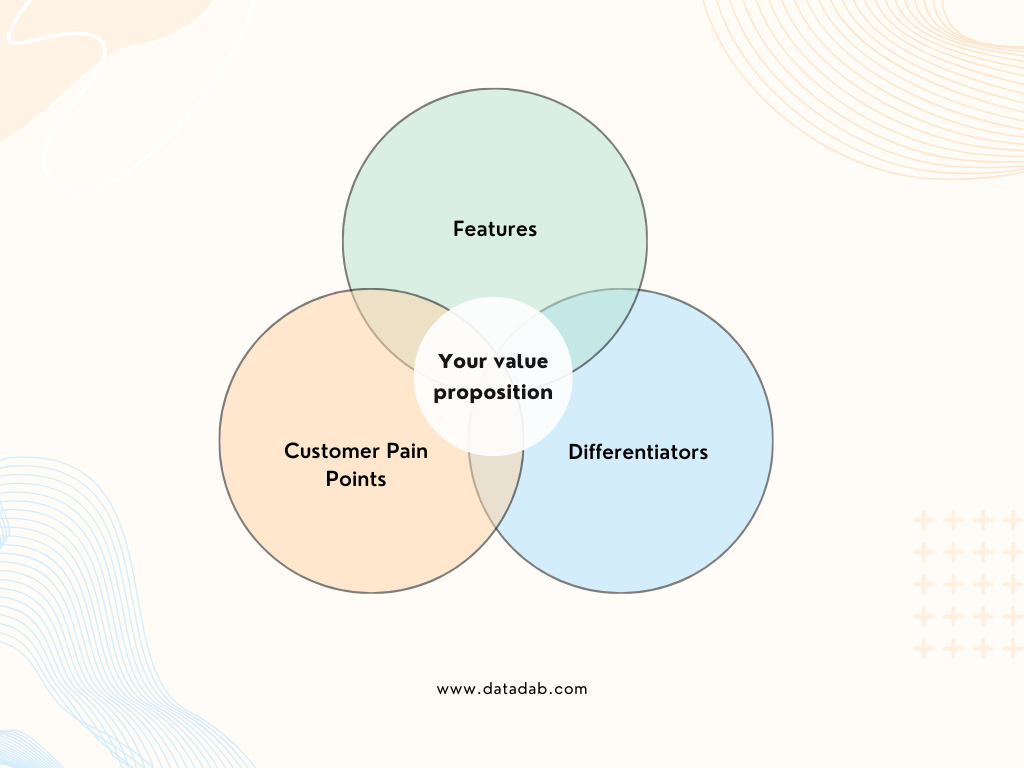
Beyond the 'What' to the 'Why'
Mapping your offerings is necessary, but it's the “why” that ultimately shapes your value proposition.
Revisit the content optimization SaaS example. A weak value prop might be:
"Our software helps you write better content."
By applying the bottom-up validation, the value prop can become:
"Our software empowers bloggers and content teams to create search-optimized, engaging content that outperforms the competition – saving time and boosting ROI."
Notice the shift:
- Specificity: Focus on bloggers and content teams, not generic “writers.”
- Outcome-oriented: Emphasizes improved search rankings and ROI.
- Differentiator: Hints at unique competitor insights.

Hierarchy as Your Segmentation Powerhouse
A well-structured hierarchy also becomes your secret weapon for customer segmentation. Let's take a project management SaaS example:
- Ideal Customer Profile 1: Small marketing teams juggling multiple campaigns
- Most Important Solutions: Collaboration tools, Kanban boards
- Key Messaging: “Simplify your workflow, boost team productivity.”
- Ideal Customer Profile 2: Enterprise software development teams
- Most Important Solutions: Task dependencies, Gantt charts, resource allocation
- Key Messaging: “Deliver complex projects on time and within budget.”
By understanding your solutions' importance across different customer segments, you tailor your messaging and content accordingly. This translates into higher conversion rates and reduced customer acquisition costs.
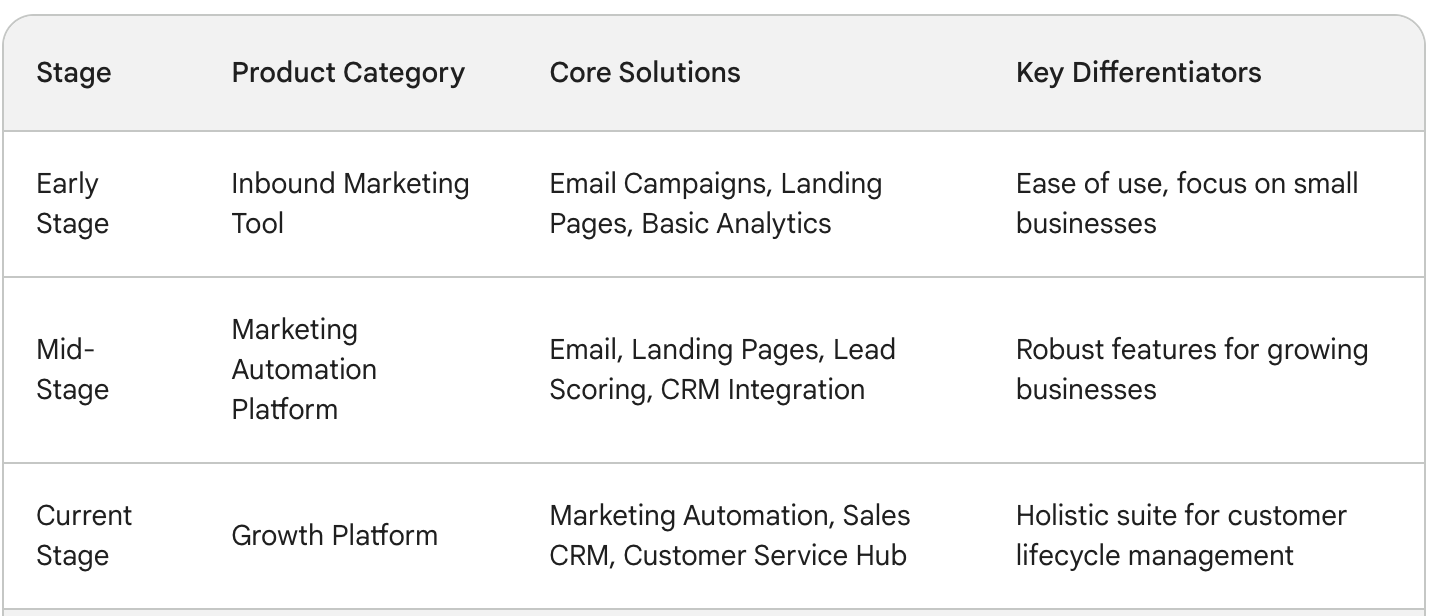
Dynamic Evolution
Remember that your product hierarchy is not static. As you evolve your offerings, and the market landscape shifts, it's imperative to periodically revisit your hierarchy. This exercise helps you:
Identify Growth Opportunities: Are there mismatches between your current hierarchy and emerging customer needs? These gaps could represent new product development directions.
Refine Feature Messaging: As features mature, is there a need to reframe how you communicate their value to better align with the broader solutions they support?
Avoid “Feature Bloat:” It's tempting to add features for the sake of it, but constantly ask: “Does this truly enhance the value of our existing solutions, or does it risk diluting our focus?”
Real-World Examples
Let's ground this discussion with some real-world cases where product hierarchy leads to a clear value proposition shift:
Example 1: HubSpot
In its early days, HubSpot was considered an inbound marketing tool. However, its hierarchy evolved to encompass sales and customer service solutions as they grew. Their value prop also shifted from just lead generation to a more holistic “Help your business grow better” message.
Example 2: Asana
Asana started as a simple task management tool. Their hierarchy expanded to include project timelines, portfolio views, and integrations. This transformed them into a work management platform, with their value prop highlighting “clarity across teams” and “work orchestration from start to finish.”
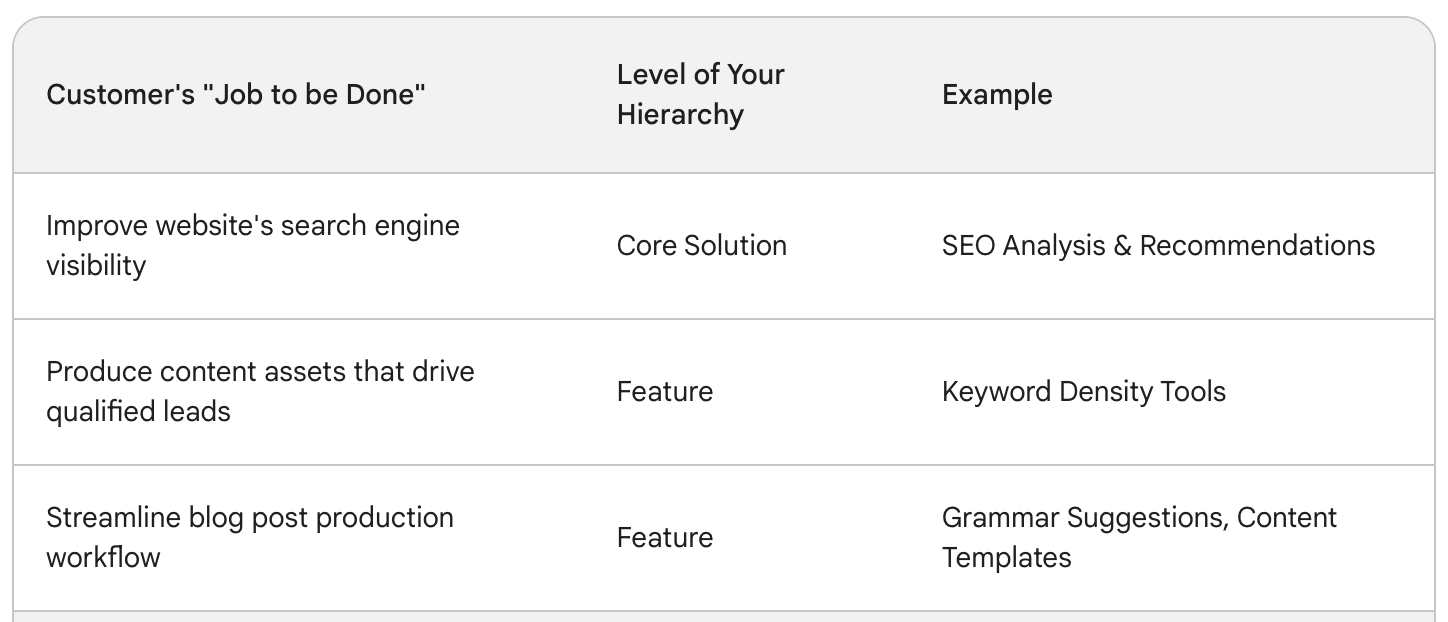
Caveats to Consider
It's worth noting a few nuances when it comes to hierarchy and value propositions:
Market Maturity: In nascent markets, you might need to educate customers on the broader category before diving into solution specifics.
Complexity of Offerings: Highly technical SaaS may require balancing hierarchy depth with accessibility for lead generation.
“Jobs to be Done” Framework: While hierarchy is vital, remember that customers ultimately “hire” products to solve specific jobs. Layer that thinking over your hierarchy.
Your value proposition isn't something you set and forget. It's a living, breathing reflection of your product offerings and customer understanding. Establishing a clear product hierarchy is the often overlooked key to unlocking a value proposition that cuts through the noise, resonates with your ideal customers, and powers your long-term growth.
FAQ
1. My product hierarchy feels messy. Where do I even start?
Start with the broadest level. Define your product category in a way that even someone outside your industry could understand. Then, list the core problems your offerings solve (these become your solutions level). Don't get bogged down in features yet – focus on the big picture.
2. How specific should I get when building my hierarchy?
Balance specificity with clarity. Avoid overly technical jargon that might alienate potential customers. Aim for a hierarchy that a knowledgeable person in your target market can understand, even if they aren't yet a user of your product.
3. What if my SaaS offerings are constantly evolving?
That's great! It means you're innovating. Set a quarterly or bi-annual reminder to revisit your hierarchy. Ask yourself: Have we added new core solutions? Do any features warrant being elevated to a solution level? Do existing descriptors still resonate with customer pain points?
4. Isn't a value proposition just a fancy tagline?
No! A tagline is catchy but often lacks substance. A strong value proposition addresses these core elements: (1) who your ideal customer is, (2) the specific problem(s) you solve, (3) the outcome your customer can expect, and (4) what makes you uniquely qualified to deliver.
5. Can I have different value props for different customer segments?
Absolutely! Your hierarchy is your guide for this. Take a core solution – the value it brings will vary depending on the customer's industry, company size, and specific role. Tailor your value prop messaging to highlight the most relevant benefits for each segment.
6. How do I use competitor analysis to improve my hierarchy and value prop?
Map out your competitors' hierarchies as best you can based on their public information. Identify where you overlap and where you genuinely differ. If they have features you lack, is there an opportunity for product development? If you have unique strengths, ensure those are front and center in your value prop.
7. What are some common pitfalls when defining a product hierarchy?
- Too feature-focused: Remember, customers buy solutions, not lists of features.
- Inside-out language: Avoid internal jargon that means nothing to your prospects.
- Stagnation: Revisit your hierarchy regularly to ensure it aligns with market shifts and product evolution.
8. I'm a SaaS marketing agency, how does this apply to my clients?
This is your secret weapon! Many clients struggle to articulate their value. Guiding them through a hierarchy exercise: (1) builds their own understanding, (2) positions you as a strategic partner, and (3) provides the foundation for a compelling content and lead generation strategy.
9. Are there tools to help with the hierarchy and value prop building?
Yes! Here are a few:
- Mind mapping tools: (Miro, Mindmeister) for visualizing your hierarchy.
- Value proposition builders: Some offer templates or step-by-step guides.
- Customer persona tools: (Xtensio, Hubspot's Make My Persona) help you connect your hierarchy to specific customer segments.
10. Where can I find more examples of strong SaaS value propositions?
Analyze websites of successful companies in your target client's industry. Deconstruct their value props – what do they do well? Where could they be stronger? Inspiration isn't about copying, but about learning what resonates with your ideal customers.






